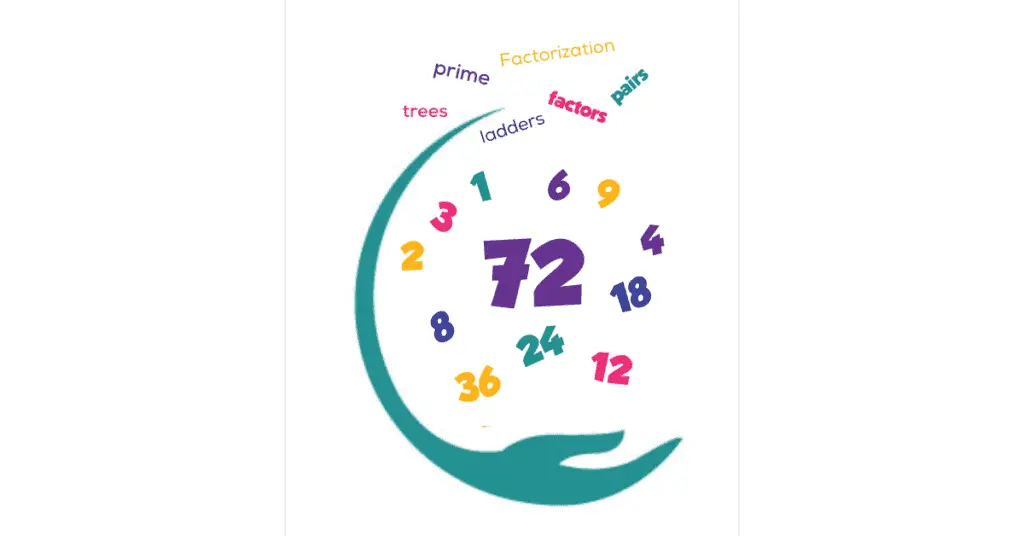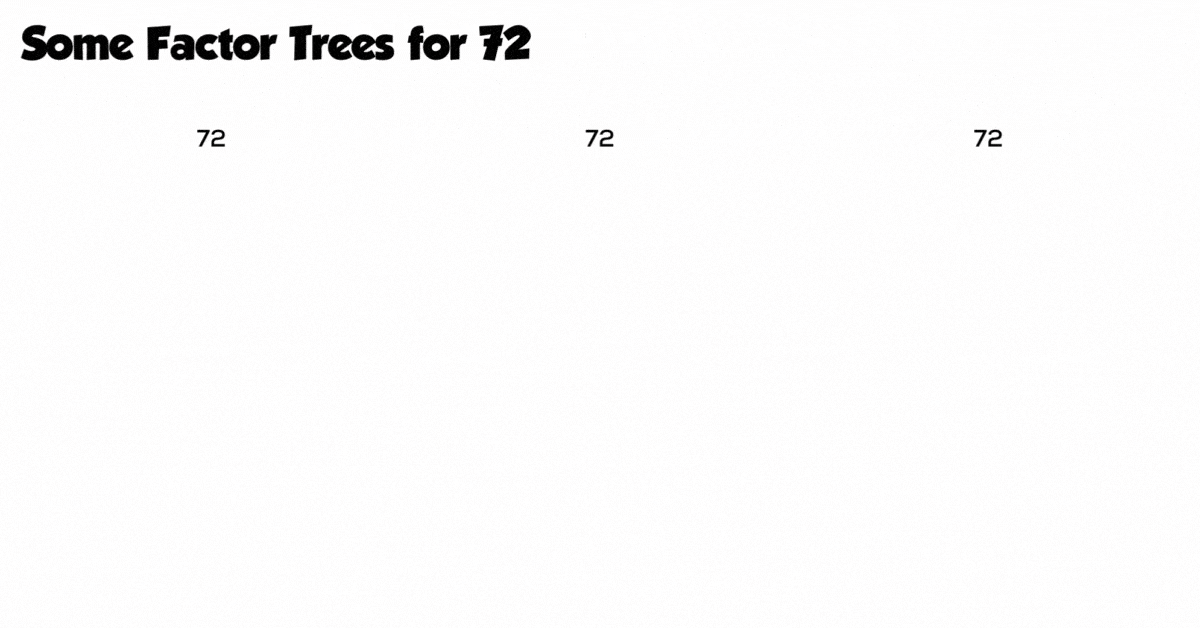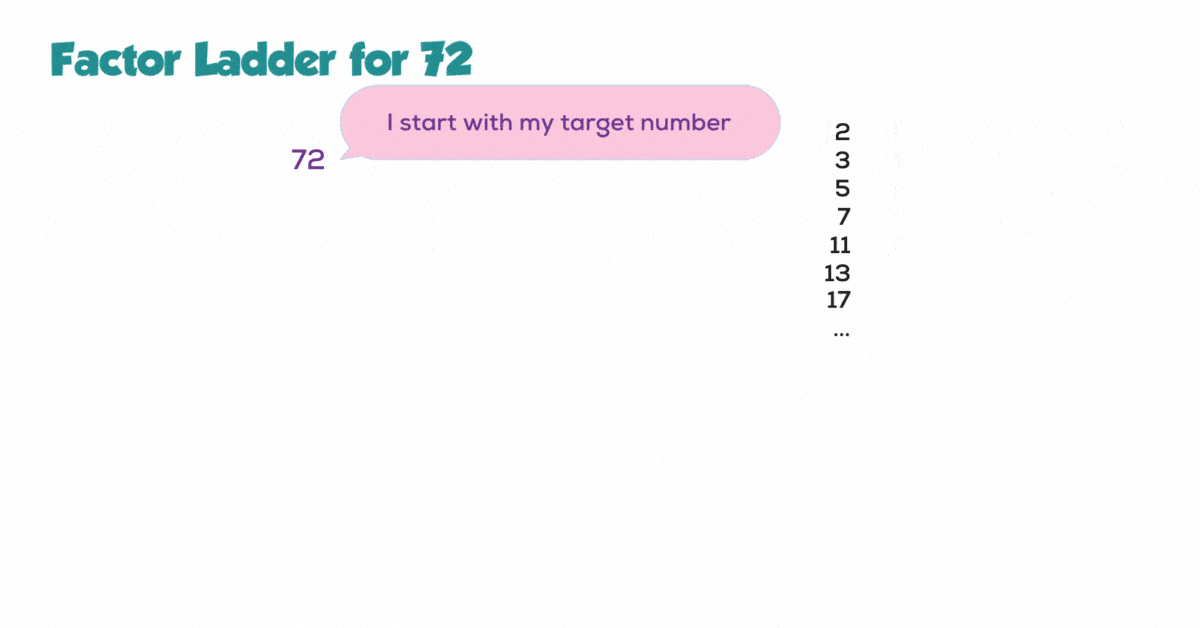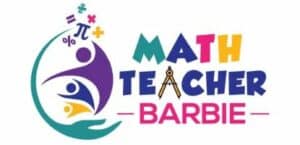
The number 72 is frequently used to demonstrate deep mathematical structure. Not only does it have factors other than 1 and itself (it is composite, or not prime), it has quite a lot of them, and its prime factors repeat themselves. It is also a small enough number to be accessible to most learners but large enough to be interesting. Some of these features even make it appear “in the real world” more often than some other numbers (for example, it is the number of hours in 3 days).
The factors of 72 are 1, 2, 3, 4, 6, 8, 9, 12, 18, 24, 36, and 72. As the only prime numbers in this list, the prime factors of 72 are 2 and 3. The prime factorization of 72 is $2\times 2\times 2\times 3\times 3$ or, using exponents, $2^3 \times 3^2$.
Factor pairs of 72
A factor pair of a number is two other whole numbers that multiply together to equal that same number. One way to visualize a factor pair is as the sides of a rectangle with the target area. One factor pair of a number is always $1$ times the number itself; in this case, $1\times 72$. From the times tables so many of us were asked to memorize, we can also see that $6\times 12=72$ and $8\times 9=72$, so $6\times 12$ and $8\times 9$ are also factor pairs. Finally, if we start back at $2$ and just try numbers to see what divides 72 evenly, we can find $2\times 36$, $3\times 24$ (did you remember that 3 days = 72 hours?), and $4\times 18$ are all factor pairs of 72.
Factors of 72
If we make a list of the individual numbers from the factor pairs, then we have a list of the factors of our target number. In our case, the factors of 72 are 1, 72, 6, 12, 8, 9, 2, 36, 3, 24, 4, and 18; or, in order from smallest to largest: 1, 2, 3, 4, 6, 8, 9, 12, 18, 24, 36, 72.
Prime Factors of 72
The only prime numbers in our list above are 2 and 3. Thus, 2 and 3 are the only prime factors of 72. Prime factors are useful in examining the structure of a number and its relationship to other numbers.
Prime Factorization of 72
The prime factorization of a number shows us not only what the prime factors are, but how many copies of each must be multiplied together to get to the target number. There are a variety of tools for finding prime factorizations, but the two most common are factor trees and factor ladders. A factor tree allows us to start with any factor pair we know, whether using a prime number or not, in order to eventually get to the prime factors. A factor ladder more directly looks for prime numbers by using divisibility rules for prime numbers in order to divide them out. (Factor ladders are also excellent tools when we learn GCF and LCM as well!) Either method shows us that $72=2\times 2\times 2\times 3\times 3=2^3\times 3^2$, so the prime factorization of 72 can be written as $2\times 2\times 2\times 3\times 3$ or as $2^3\times 3^2$, depending on whether the student has learned about exponents or not. For more about factoring numbers, check out my blog post Factoring Numbers: How Do I Help My Child?


You’ve Got This!
